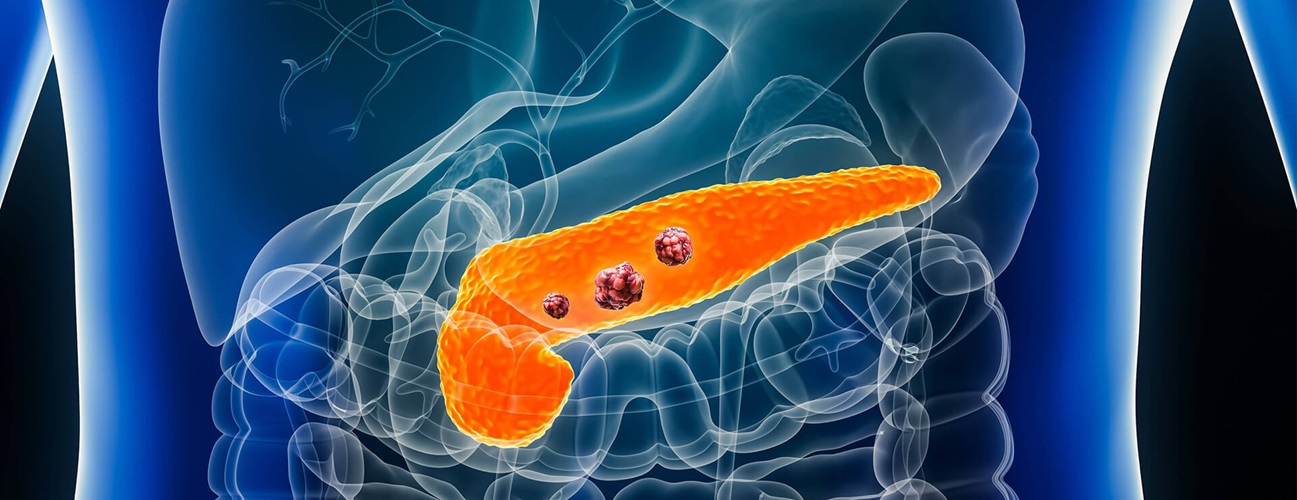Pancreatic Cancer Prognosis
Reviewed By:
Five-year survival rates are available for each stage, but it’s important for patients and families to understand that these numbers represent an average. Every patient is different, and what works for one person might not work for another — and vice versa.
There are certainly patients who far outlive their prognosis or even become disease-free. And overall survival rates, while still much lower than other cancers, have gradually improved over the years.
The following information about prognosis refers to that of exocrine pancreatic cancer, specifically pancreatic adenocarcinomas, which represent more than 90 percent of diagnoses. Other, less common types of pancreatic cancer may differ. For example, squamous adenocarcinoma of the pancreas is associated with very poor outcomes, and neuroendocrine tumors tend to have a better prognosis.
Prognosis Depends on Stage at Diagnosis
Long-term prognosis for pancreatic cancer depends on the size and type of the tumor, lymph node involvement and degree of metastasis (spread) at the time of diagnosis. The earlier pancreatic cancer is diagnosed and treated, the better the prognosis.
Unfortunately, pancreatic cancer usually shows little or no symptoms until it has advanced and spread. Therefore, most cases (up to 80 percent) are diagnosed at later, more difficult-to-treat stages.
Read more about pancreatic cancer staging.
Five-Year Survival Rate
The combined five-year survival rate for pancreatic cancer — the percentage of all patients who are living five years after diagnosis — is 12 percent. This is because far more people are diagnosed as stage IV when the disease has metastasized.
Stage IV Prognosis
Stage IV pancreatic cancer has a five-year survival rate of 1 percent. The average patient diagnosed with late-stage pancreatic cancer will live for about one year after diagnosis.
Potentially Curable if Caught Very Early
Despite the overall poor prognosis and the fact that the disease is mostly incurable, pancreatic cancer has the potential to be curable if caught very early. Up to 10 percent of patients who receive an early diagnosis become disease-free after treatment. For patients who are diagnosed before the tumor grows much or spreads, the average pancreatic cancer survival time is three to three and a half years.
Better Prognosis for Resectable Tumors
Patients whose tumors are found before they have metastasized or become locally advanced tend to have longer survival rates, on average, because their tumors can usually be resected (surgically removed).
About 15 to 20 percent of all pancreatic tumors are resectable. These include stage I and stage II tumors. Rarely, locally advanced stage III tumors, which are typically considered unresectable (do not qualify for surgery), are characterized as “borderline” and may be removed if the patient has access to an experienced, highly trained surgeon.
Tumors can still grow back in many patients. So, on average, patients whose tumors were resected live for two and a half years after their diagnosis and have a five-year survival rate of 50 percent if they can finish six months of adjuvant chemotherapy.
Our Approach to Pancreatic Cancer

Johns Hopkins pancreatic surgeons perform a variety of innovative techniques to treat pancreatic cancer, including operations using both traditional open methods and minimally invasive methods. During an appointment at our multidisciplinary clinic, patients will meet with experienced specialists who will care for them at every stage of the journey.
Factors Beyond Stage That Impact Survival
Tumor-Specific Treatment
Getting the right treatment for the specific tumor type can have an impact on a patient’s survival. Most large, high-volume pancreatic cancer centers will rely on a pathology team to identify the individual tumor subtype and analyze the patient’s genetic history. Certain chemotherapy and immunotherapy drugs can be especially effective in some tumor types but completely ineffective in others.
Read more about pancreatic cancer treatment.
Physical Status After Treatment
Getting the right nutrition and keeping physically active as much as possible under the circumstances can really impact how a patient tolerates the side effects of treatment and the symptoms of pancreatic cancer.
Younger patients tend to do better because they have fewer other conditions that may limit recovery, but even older patients can positively impact their prognosis by focusing on nutrition and exercise.
Talk to your doctor about what to expect after treatment and what you can do to get the best possible prognosis.





